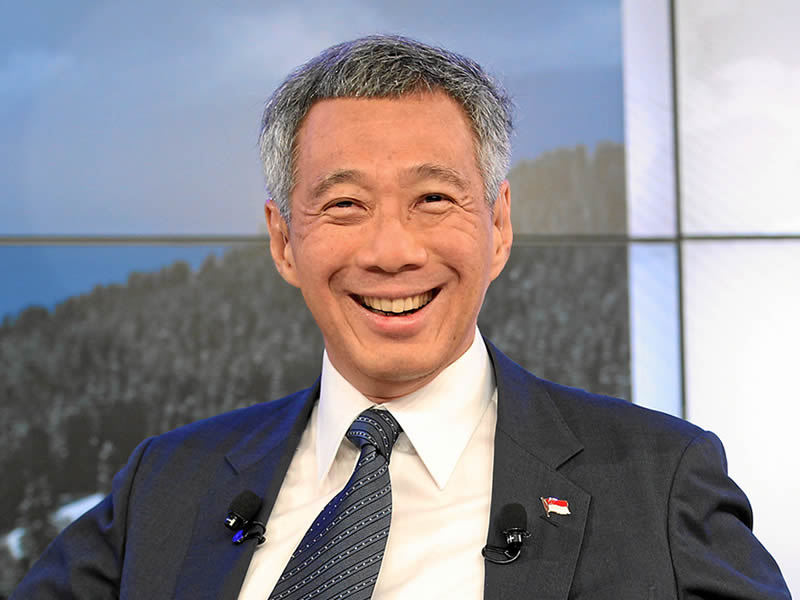The Trans Pacific Partnership was supposed to set the tone for trade and growth in the region. Now that it’s been suddenly nixed by US President Donald Trump, the release last Thursday of Singapore’s economic blueprint for the next decade could not have been better timed.
The Singapore Government’s Commission for the Future Economy report is the result of a full year of consulting 9,000 stakeholders by its 30-member committee, including trade associations, public agencies and companies.
At the report’s centre was a cry against the apparently fading light of globalisation, and recommendations of ways to protect the country’s economy using technology.

“It no longer seems certain we are on an inexorable course towards greater globalisation, stronger multilateral institutions and a more connected world,” the CFE said.
“Instead, we saw nativist politics and protectionist economics growing in strength and influence in Europe and the US.
“The anti-globalisation trend will undermine international trade, hurting all economies, but particularly small, open ones like Singapore, with two-thirds of our gross domestic product generated by external demand.
“Given the current sentiments against globalisation, we must not only resist protectionism, but forge ahead to deepen linkages with our overseas partners and seek opportunities in new markets.”
As InnovationAus.com has noted recently, one can have one’s own opinions about China’s ruling Communist Party but its officials are relentless long-term planners. China’s policy horizons stretch out decades, and its Five-Year Plans are delivered like clockwork.
The other countries in the Asia-Pacific that have been most successful in modernising their economies – and this has for decades now been centred around innovation and technological improvements – have also followed this strategy of long-termism.
That is, Japan, South Korea, Taiwan and – perhaps most relevantly to Australia – Singapore.
This has helped to by lift the standard of living of their citizens and put them in many cases at the forefront of various areas of innovation.
As this publication has consistently noted, the Singapore Government has been ahead of the pack. Indeed the entire city state and its continuing economic success is a standout global example of long-term planning.
The success of stable and consistent long-term views of strategic industrial development by Asia’s most successful economies makes Innovation and Science Australia’s plan for a long-horizon ‘2030 Strategy’ – to be delivered at the end of 2017 – look sensible.
At times, it seems the projects and policies in the sector come too thick and fact to keep up. But the Commission for the Future Economy report was a stand out in what has become a crowded field of Singaporean – simply because it is the overarching strategy.
Like China, this has been made far easier as Singapore is effectively a one Party state. The ruling People’s Action Party which itself has been run, at least so far, by the family of the country’s founder Lee Kwan Yew (whose son Lee Hsien Loong is the current Prime Minister) has been a key promoter of the country as a regional innovation and technology hub.
The report says despite the global challenges, there are many opportunities for Singapore. They are the same opportunities we hear about in Australia. They have a familiar ring.
“Singapore is also well-poised to tap into several growth sectors. For example, the rise of the middle-class and urbanisation in Asia will increase demand for finance, hub services, logistics, as well as urban solutions.
“The digital economy also presents opportunities to transform industries, while new technologies can help to raise productivity in sectors like advanced manufacturing.”
The report identified seven “mutually-reinforcing” strategies were identified to achieve the vision:
- Deepen and diversify international connections
- Acquire and utilise deep skills
- Strengthen enterprise capabilities to innovate and scale-up
- Build strong digital capabilities
- Develop a vibrant and connected city of opportunity
- Develop and implement Industry Transformation Maps (ITMs)
- Partner each other to enable innovation and growth
There was some veiled criticism and disappointment that the decision by the Australian Government to choose Singapore as one of its five technology ‘Landing Pads’ as being too predictable. As many gave half-joked, Singapore itself is one giant landing pad.
But even in the 18-months since Malcolm Turnbull launched the National Science and Innovation Agenda, it’s looked increasingly like the right move.
And again, people have differing opinions about the efficacy of this model, but it’s increasingly clear that being in a user-friendly country and/or city is critical to attracting the maximum pool of good talent.
Singapore’s Landing Pad is being headed by Joe Ziegler, formerly of Telstra backed accelerator muru-D, which has homes in both Australia and Singapore.
It was set to get a publicity boost next month when Trade and Investment Minister Steve Ciobo was heading to Singapore for an official launch next month, but his office has advised his trip had been cancelled.
Still, this should have no real affect on its operation, and the CFE is a genuine further boost for Singapore as the regional technology and open-trade hub.
And once again, Singapore has produced a strategy that Australia should look at very closely.
There’s more to come in the accelerator type sector – and with strong Australian involvement – but as people in the tech sector (who have never met a cliche they didn’t adore) are so fond of saying: Watch this space!
Do you know more? Contact James Riley via Email.

